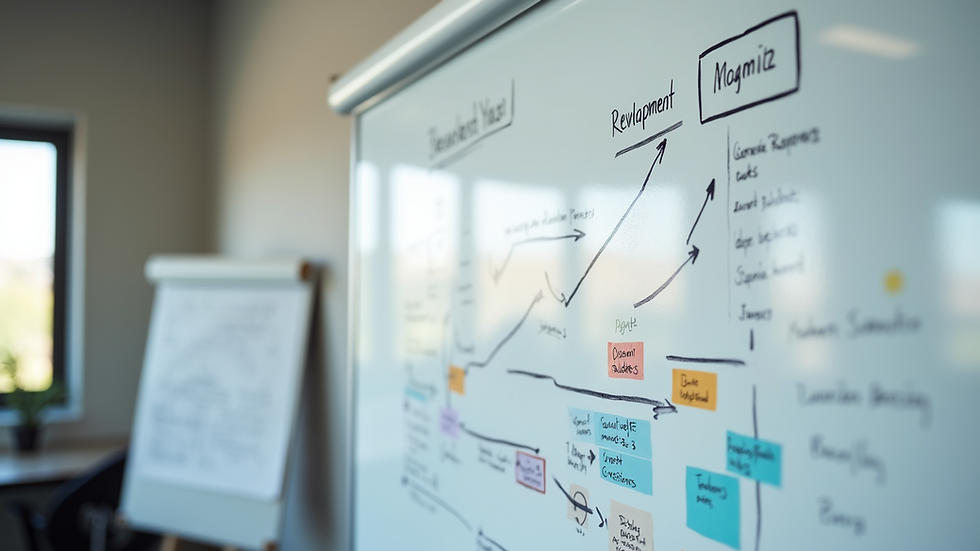Innovating Through Engineering Product Development
- Admin
- Sep 22
- 4 min read
Innovation in technical product design is the cornerstone of modern industry. It drives progress, enhances user experience, and creates competitive advantages. Whether you are developing a new gadget, a piece of machinery, or software integrated with hardware, the process of engineering product development is complex and requires a strategic approach. This article explores how innovation can be fostered through technical product design, the key stages involved, and practical recommendations for success.
The Role of Technical Product Design in Innovation
Technical product design is more than just creating blueprints or 3D models. It involves understanding user needs, material properties, manufacturing processes, and market trends. The goal is to create a product that is not only functional but also efficient, reliable, and cost-effective.
For example, consider the development of a new electric vehicle battery. The design team must balance energy density, weight, safety, and cost. Innovations in materials science, such as solid-state electrolytes, can revolutionise battery performance. However, integrating these materials requires deep technical knowledge and iterative testing.
Key aspects of technical product design include:
User-Centric Approach: Designing with the end-user in mind ensures the product meets real needs.
Cross-Disciplinary Collaboration: Engineers, designers, marketers, and manufacturers must work together.
Prototyping and Testing: Rapid prototyping helps identify design flaws early.
Sustainability Considerations: Eco-friendly materials and processes are increasingly important.
By focusing on these areas, companies can innovate effectively and bring superior products to market.

Key Stages in Technical Product Design and Development
The journey from concept to market-ready product involves several critical stages. Each stage requires careful planning and execution to ensure success.
1. Conceptualisation and Research
This initial phase involves identifying market needs and brainstorming ideas. Research includes competitor analysis, user surveys, and feasibility studies. The goal is to define a clear product concept that solves a specific problem.
2. Design and Engineering
Once the concept is validated, detailed design work begins. Engineers create technical drawings, select materials, and develop specifications. Computer-aided design (CAD) tools are essential here for precision and simulation.
3. Prototyping and Testing
Prototypes allow teams to test form, fit, and function. Testing can reveal issues with durability, usability, or performance. Iterative improvements are made based on feedback.
4. Manufacturing Planning
Designs are adapted for manufacturability. This includes selecting production methods, sourcing suppliers, and planning quality control processes.
5. Launch and Post-Launch Support
After production, the product is launched to the market. Ongoing support and updates ensure customer satisfaction and product longevity.
Each stage is interconnected, and skipping steps can lead to costly errors. A structured approach to technical product design maximises the chances of innovation success.

What are the 4 Major Types of Product Development?
Understanding the different types of product development helps organisations choose the right strategy for innovation. The four major types are:
1. New Product Development
Creating entirely new products that have not existed before. This type often involves high risk but can lead to significant market disruption.
2. Product Improvement
Enhancing existing products by adding features, improving performance, or reducing costs. This is a common approach to stay competitive.
3. Product Line Extension
Adding new variants or models to an existing product line. For example, launching a new colour or size option.
4. Repositioning
Changing the target market or use case of an existing product. This can open new revenue streams without altering the product itself.
Each type requires different resources and timelines. Companies should align their product development efforts with their overall business goals and market conditions.

Practical Recommendations for Successful Innovation
Innovation through technical product design is achievable with the right mindset and tools. Here are some actionable tips:
Embrace Agile Methodologies: Use iterative cycles to develop and refine products quickly.
Invest in Technology: Tools like CAD, simulation software, and rapid prototyping machines accelerate development.
Foster a Collaborative Culture: Encourage open communication between departments and with customers.
Focus on Sustainability: Incorporate eco-friendly materials and processes to meet regulatory and consumer demands.
Leverage Data Analytics: Use market and user data to inform design decisions and predict trends.
Protect Intellectual Property: Secure patents and trademarks to safeguard innovations.
By implementing these strategies, organisations can reduce time-to-market and increase the likelihood of product success.
The Future of Engineering Product Development
The landscape of engineering product development is evolving rapidly. Emerging technologies such as artificial intelligence, the Internet of Things (IoT), and advanced materials are transforming how products are designed and manufactured.
For instance, AI-driven design tools can generate optimised product configurations based on performance criteria. IoT integration allows products to collect data and adapt to user behaviour in real-time. Additive manufacturing (3D printing) enables complex geometries that were previously impossible.
To stay ahead, companies must continuously invest in research and development, embrace new technologies, and maintain a customer-focused approach. Innovation is not a one-time event but an ongoing process that requires dedication and agility.
Innovation through technical product design is a dynamic and rewarding journey. By understanding the stages of development, types of product innovation, and practical strategies, organisations can create products that stand out in the market and meet evolving customer needs. The future holds exciting possibilities for those willing to embrace change and push the boundaries of engineering creativity.




Comments